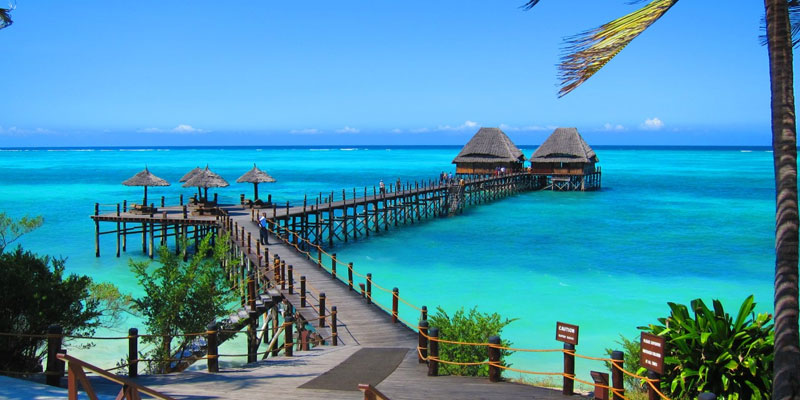

In the 18 th Century the Sultan of Oman visited Zanzibar and was amazed by the favorable climate of the Island. Comparing with his homeland’s climate, the Sultan decided to stay in Zanzibar. As a result of his decision to settle in Zanzibar, he brought and planted spices, traded slaves, gold, and ivory. Zanzibar is popular for its historical sites, beautiful beaches, good climate and different kinds of spices and oriental foods. Zanzibar is now leading in tourism industry in East Africa. Furthermore, the Island was declared the World Heritage Site by UNESCO in 2000.
This town is also known as Unguja Town or Zanzibar Town. At Stone Town you will see the following things: The Stone Town Cultural Centre (Old Dispensary) situated along the Mizingani Road, the four storey building originally built as a private residence, but later used by colonists as Dispensary. These are very important sites to visit during your tour in the Archipelago of the Island.
This place was used by Arabs and their European counterparts, as a center to receive and ship slaves from all over East Africa. With intrusion and humanitarian reasons the slaves’ market was closed in 1873. The British Christian Mission bought the place and built the Anglican Missionary Hospital.
Palace Museum was formerly the residence of the Sultan of Zanzibar. This large white house depicts about the Sultan’s life and properties such as fancy furniture etc.
This fort stands next to the House of Wonders. The fort was built on the site of a Portuguese chapel. It is believed that the construction took place between 1698 and 1701. Other sites in the Stone Town are:- The House of Wonders, Dhow Harbour, National Museum and Livingstone’s House.
The Kizimkazi fishing village is located on the southern point of the island which gives the tourists a chance to swim with Dolphins in the Indian Ocean. In addition, this place marks the old mosque built in the 12th century.
One of the common expeditions done in Zanzibar by visitors and indigenous from the mainland of Tanzania is to visit spices plantations. The Spice Tour takes you out of town to see large plantations with varieties of spices: ginger, cinnamon, black pepper and cloves. Spices are used for traditional medicines, modern medicines and cosmetics. Spices are also used for food (tea and rice). You can’t wait to get a nice aroma and the taste from these special spices of the great island of Zanzibar.
There are fewer animals in Zanzibar compared to the number of different species of fish and other sea living things. The Jozani forest which is situated southeast of Stone Town is a life supporting source for Red Monkeys, small bucks and bush pigs. There is natural vegetation and different types of trees.
After a very long day around the Island you can have a rest while sailing along the coast of the white sand beaches. Normally, it is done during the sunset when the ocean radiates its red colour shade which makes it very attractive to view.
The common language that unites over 120 tribes in Tanzania is “Swahili” which was selected by our first President J.K. Nyerere after independence as the National language. This language is believed to have originated from this Island as most of its words are formulated from the Arabic and tribal languages. English is the second language in Tanzania.
The climate of Zanzibar is tropical which offers two rainy seasons. The long rains from March to early June and short rains from October through November. Zanzibar is hot during the day and this is suitable for divers and swimmers. Evenings are cooled with a breeze from the India Ocean.
Developed by the tourism industry Zanzibar has all the necessary facilities such as luxurious hotels and lodges for comfortable accommodation, domestic flights including the ZanAir, Precision Air and Air Excel, flying doctors, surfing internet cafes, express boats to Dar – es – salaam, sea port and many more.